The pufferfish’s remarkable ability to inflate itself like a spiky balloon when threatened is one of nature’s most fascinating defense mechanisms. This distinctive behavior has made these fish famous in popular culture and a subject of scientific curiosity. When confronted by potential predators, pufferfish can transform from their normal appearance into an intimidating, spiny sphere in seconds. This dramatic metamorphosis is not just for show—it represents a sophisticated survival strategy that has evolved over millions of years. Understanding why and how pufferfish inflate provides insights into the incredible adaptations animals develop in response to predatory pressure and highlights the diverse ways species ensure their survival in competitive ecosystems.
The Evolutionary Purpose of Inflation

Pufferfish inflation evolved as a primary defense mechanism against predators in marine environments. When a pufferfish expands, it can increase its size by up to three times, making it significantly more difficult for predators to swallow. This adaptation addresses a fundamental challenge for these relatively slow-swimming fish: how to avoid being eaten in an ocean full of faster, more agile hunters.
The inflation response represents a classic example of an evolutionary trade-off, where the pufferfish sacrifices swimming efficiency and speed for a powerful defensive capability. Fossil evidence suggests this adaptation has existed for at least 50 million years, proving its effectiveness as a survival strategy across changing marine ecosystems and predator populations.
The Mechanics of Inflation
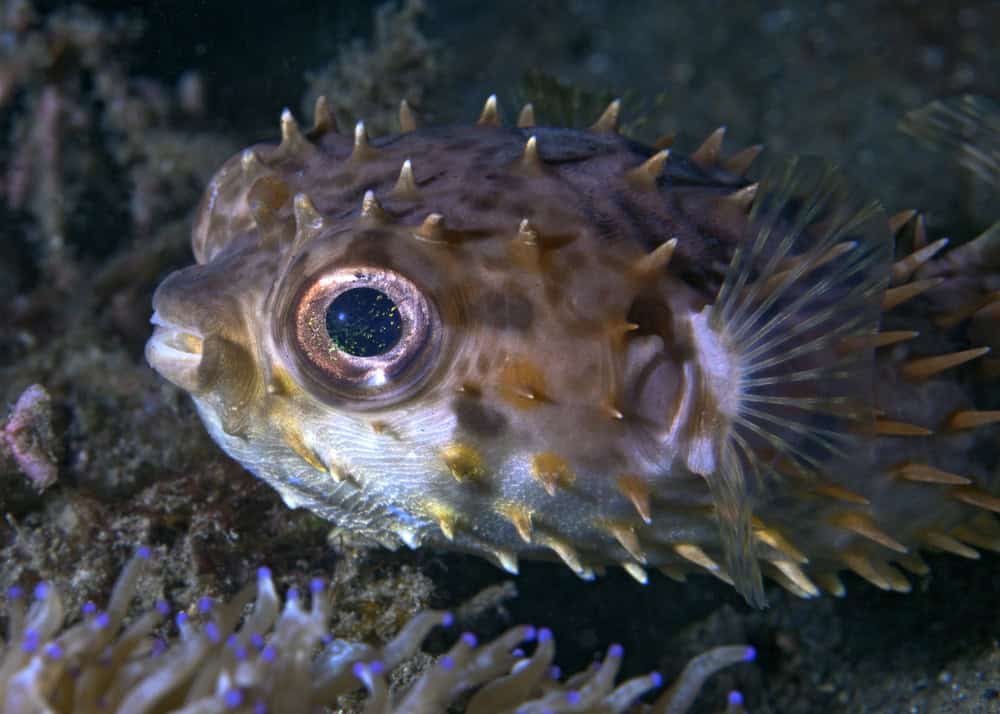
The inflation process involves a series of specialized anatomical adaptations. Unlike other fish that might gulp air, pufferfish rapidly intake water into a highly elastic stomach that can expand dramatically. This expansion is possible because pufferfish lack ribs that would otherwise restrict stomach expansion, and they possess specialized skin that can stretch without tearing.
During inflation, the fish’s stomach fills with water through powerful pumping motions of its mouth and gills, allowing it to expand in mere seconds. The process is controlled by specialized muscles and neural pathways that can trigger this response almost instantaneously when the fish detects danger. Once the threat passes, the pufferfish expels the water through its gills and mouth, returning to its normal size.
Triggers for the Inflation Response
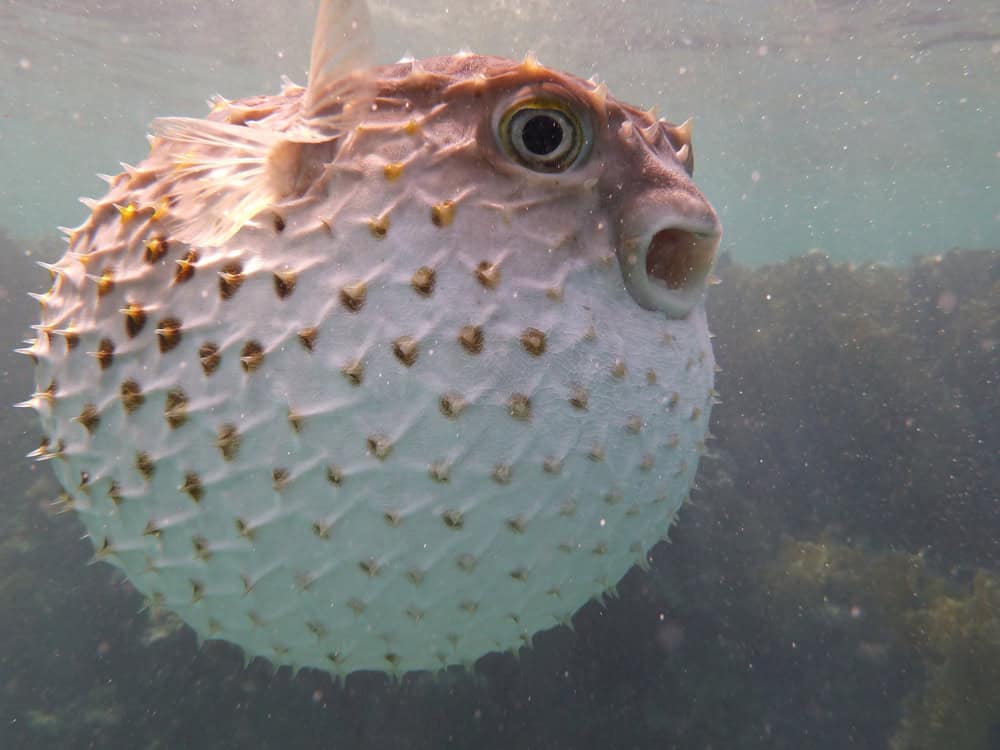
Pufferfish don’t inflate randomly or frequently—the response is triggered by specific environmental cues that signal danger. Visual detection of predators, sudden shadows overhead, unexpected physical contact, or water vibrations consistent with an approaching predator can all activate the inflation response.
Research has shown that pufferfish possess specialized sensory cells that can detect pressure changes and water movements, allowing them to identify potential threats even before visual confirmation. The fish’s brain processes these signals rapidly, initiating the inflation sequence when certain threat thresholds are crossed. Interestingly, pufferfish can also learn from experience, with studies showing that they may become more discriminating about what stimuli trigger inflation after repeated non-threatening encounters.
Multiple Defense Layers: Beyond Inflation

Inflation is just one component of the pufferfish’s comprehensive defense strategy. Most species complement their ability to expand with tetrodotoxin, a powerful neurotoxin that makes them highly poisonous to predators. This toxin, which is up to 1,200 times more potent than cyanide, is concentrated in the fish’s organs and skin.
When combined with inflation, this creates a dual deterrent: predators face not only a difficult-to-swallow meal but a potentially lethal one. Additionally, many pufferfish species have developed spiny skin that becomes more prominent when inflated, adding a third defensive layer. These spines, which lie flat when the fish is in its normal state, become erect during inflation, creating a formidable array of sharp projections that can injure a predator’s mouth or throat.
The Physical Challenges of Inflation
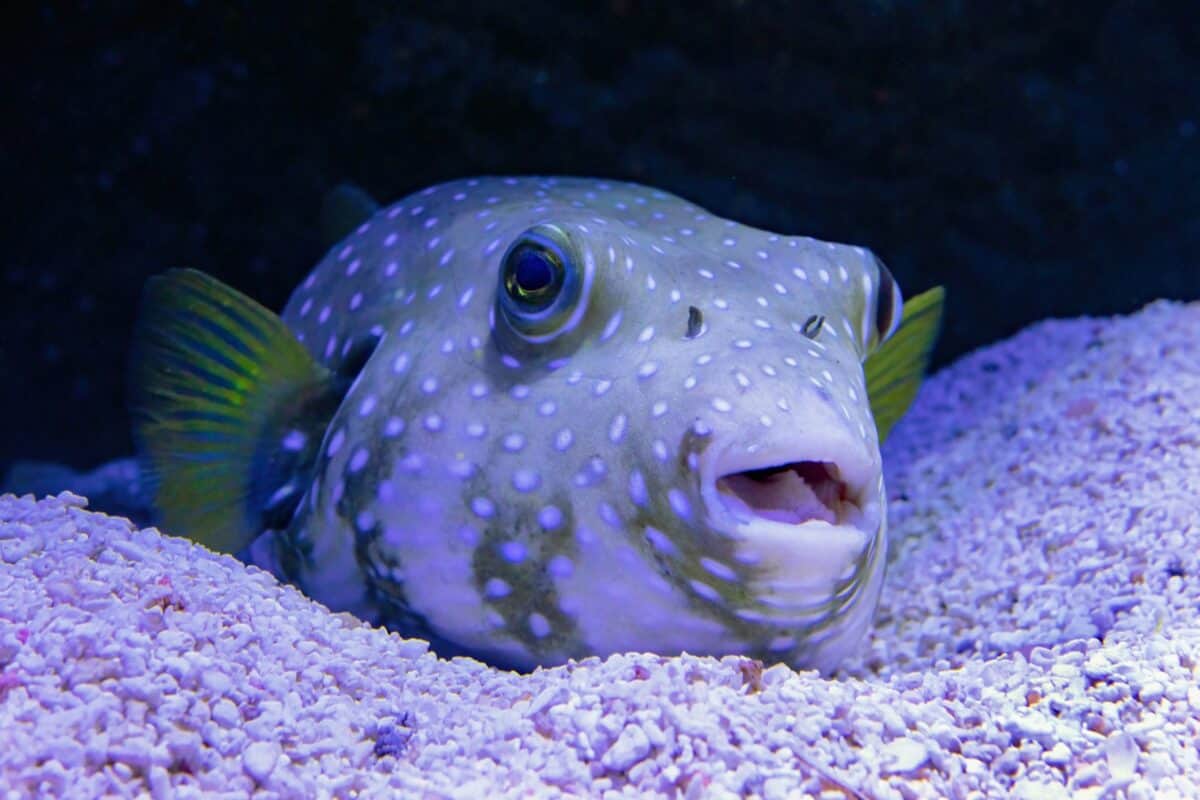
While inflation is an effective defense, it comes with significant physiological costs and risks for the pufferfish. The process requires substantial energy and puts enormous strain on the fish’s body systems. During inflation, the pufferfish’s heart rate increases dramatically, and its oxygen consumption rises sharply to power the rapid muscle contractions needed for water intake.
The expanded state severely restricts the fish’s mobility, making it vulnerable if the initial defense fails to deter the predator. There’s also evidence that frequent inflation can cause internal injuries to the pufferfish, particularly if forced to inflate repeatedly in a short period. For these reasons, pufferfish only resort to inflation when genuinely threatened and will try other evasive maneuvers first, such as hiding or swift directional changes.
Different Inflation Patterns Across Species

The pufferfish family (Tetraodontidae) includes approximately 120 species, and while all can inflate, their specific inflation behaviors show fascinating variations. Some species, like the spotted pufferfish (Arothron meleagris), inflate more readily than others. The freshwater pufferfish species tend to inflate more slowly than their marine counterparts.
Certain species combine inflation with additional defensive behaviors, such as the dogface pufferfish (Arothron nigropunctatus), which can produce audible “barking” sounds while inflated to further startle predators. The size increase during inflation also varies by species, with some able to expand to more than three times their normal volume while others achieve more modest enlargement. These variations reflect evolutionary adaptations to different predator pressures and environmental conditions across the diverse habitats where pufferfish are found.
The Neurological Control of Inflation

The pufferfish’s inflation response is controlled by a sophisticated neurological system that balances automatic reflexes with cognitive assessment. Research has identified specific neurons in the pufferfish brain that activate during the inflation sequence, creating a cascade of signals that coordinate the complex muscular actions required. Interestingly, pufferfish appear to have some conscious control over their inflation response.
They can assess threat levels and modulate their response accordingly, sometimes producing partial inflation when the threat level is uncertain. Studies using electroencephalography have shown distinctive brain wave patterns during inflation events, suggesting active neurological processing rather than a simple reflex action. This neurological complexity helps explain why pufferfish can learn from experience and become more selective about when they deploy their defensive inflation.
Inflation Success Rates Against Predators

Field observations and laboratory studies have demonstrated that the pufferfish’s inflation strategy is remarkably effective against many predators. Research published in the Journal of Fish Biology found that when presented with inflated pufferfish, approximately 85% of potential predators abandoned their attack attempts. Even specialized predators that have evolved strategies to deal with pufferfish toxicity, such as certain tiger shark populations, can be deterred by the inflation response, particularly when combined with the fish’s spines. The effectiveness varies depending on the predator species, with inflation providing less protection against predators with exceptionally large mouths or specialized feeding strategies. Despite these limitations, the evolutionary persistence of this defensive mechanism across millions of years of marine predator-prey dynamics testifies to its overall success rate.
Human Impacts on Pufferfish Inflation Behavior
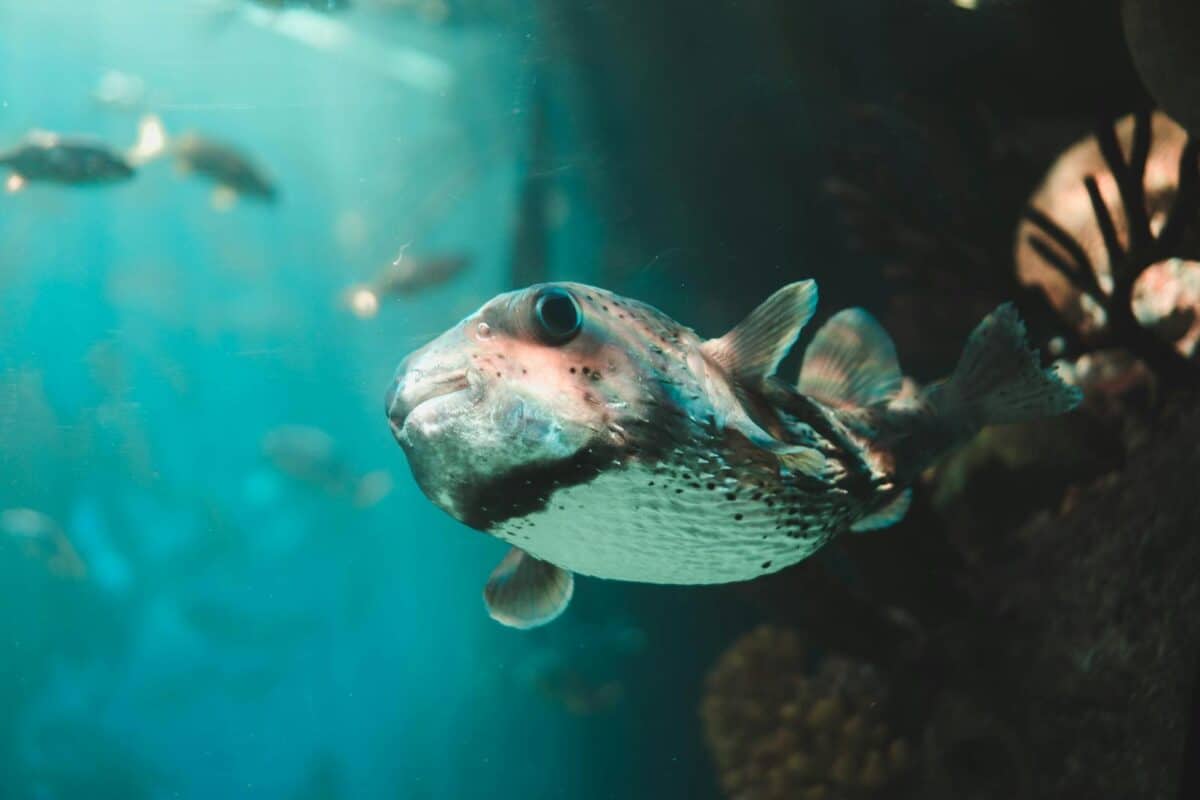
Human activities have introduced new stressors that affect pufferfish inflation behaviors. In areas with high boat traffic or frequent divers, pufferfish may become habituated to human presence, potentially reducing their inflation response in genuinely threatening situations. Conversely, in areas where humans actively disturb wildlife, pufferfish may inflate more frequently, causing unnecessary physiological stress.
Marine pollution, particularly noise pollution, can interfere with the sensory systems pufferfish use to detect threats, sometimes triggering inappropriate inflation responses. Research published in Marine Ecology Progress Series documented higher cortisol levels (a stress hormone) in pufferfish from heavily touristed areas compared to those in protected marine reserves, suggesting chronic stress from human interactions. Conservation efforts increasingly include guidelines for responsible wildlife viewing that discourage intentionally causing pufferfish to inflate for human entertainment.
Inflation in Juvenile Pufferfish

The development of inflation capabilities in young pufferfish provides fascinating insights into how this complex behavior emerges. Juvenile pufferfish can inflate from a very early age, though their technique improves with practice and physical development. Observations of pufferfish hatcheries show that young pufferfish initially produce less coordinated, sometimes partial inflations that become more efficient as they mature.
Interestingly, juvenile pufferfish tend to inflate more readily than adults, suggesting a developmental period where they may “calibrate” their threat assessment capabilities. This heightened sensitivity makes evolutionary sense, as younger, smaller fish face greater predation risk and benefit from a lower threshold for defensive responses. Research indicates that proper development of inflation capabilities is influenced by both genetic factors and environmental conditions during early growth stages.
Inflation in Captivity: Considerations for Pufferfish Keepers
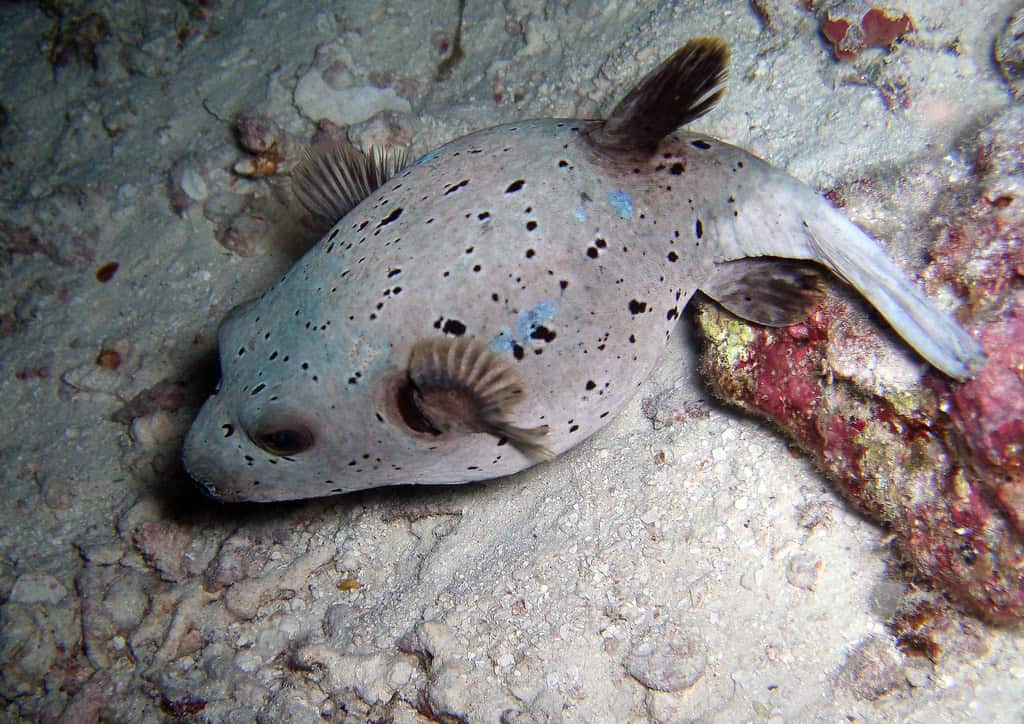
For aquarium enthusiasts keeping pufferfish as pets, understanding inflation behavior is crucial for proper care. While the inflation mechanism is a natural defensive response, frequent inflation in captivity often indicates stress from inappropriate tank conditions, incompatible tank mates, or handling practices. Experts advise that a well-kept pufferfish in a properly maintained aquarium should rarely, if ever, need to inflate.
Aquarists should never intentionally cause inflation by frightening or handling the fish, as each inflation event places significant physiological stress on the animal and can potentially cause internal injuries. Tank design should provide adequate hiding places where pufferfish can retreat when feeling threatened, reducing their need to resort to inflation. Proper species research is essential, as different pufferfish species have varying sensitivity levels and may require specific environmental conditions to minimize stress-induced inflation.
Conclusion: Nature’s Remarkable Defensive Innovation

The pufferfish’s inflation response represents one of nature’s most ingenious defensive adaptations, balancing the trade-offs between vulnerability and protection with remarkable efficiency. This behavior showcases the power of evolutionary processes to develop complex solutions to survival challenges, combining specialized anatomy, neurological control, and behavioral adaptations into an integrated defensive system.
Understanding the mechanisms and purposes behind pufferfish inflation not only satisfies scientific curiosity but also informs responsible interaction with these unique creatures, whether in the wild or in captivity. As we continue to study these remarkable fish, we gain valuable insights into the broader principles of predator-prey dynamics and the diverse strategies animals employ to navigate dangerous environments.
- Why Pandas Were Once Nearly Extinct—and How China Saved Them - August 9, 2025
- This Fish Has the Most Teeth in the Ocean—And Uses Them Well - August 9, 2025
- How Wolves Use Group Howls to Reunite With Pups - August 9, 2025

